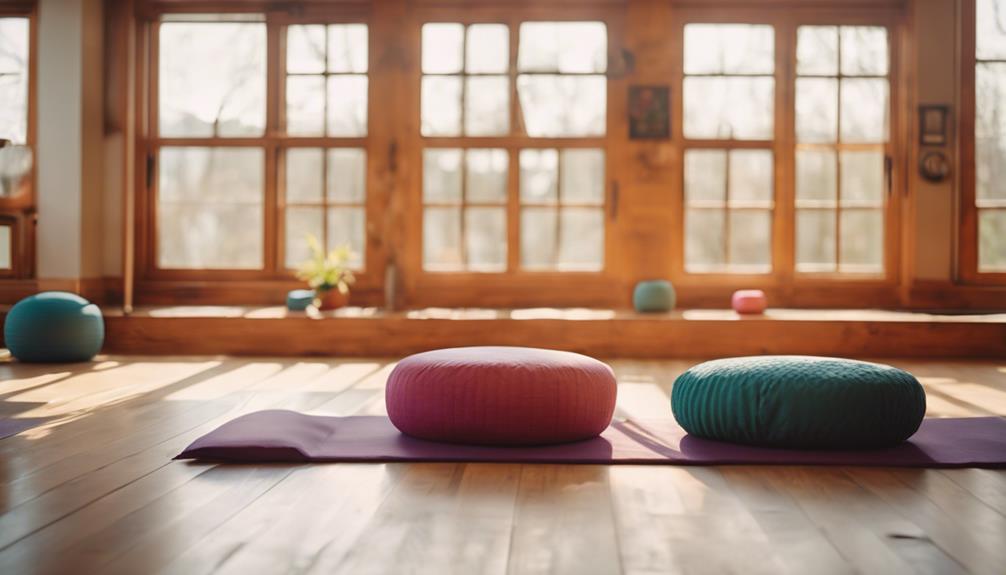Yoga For Beginners At Home

Yoga has become an increasingly popular practice for people seeking physical fitness, mental clarity, and emotional balance. For beginners, starting yoga at home can seem daunting, but with the right approach and resources, it can be incredibly rewarding. This comprehensive guide will walk you through everything you need to know about practicing yoga for beginners at home, ensuring you feel confident and inspired to embark on your yoga journey.
Understanding Yoga: What is it and Why is it Beneficial?
Yoga is an ancient practice that combines physical postures, breathing techniques, and meditation to foster a sense of harmony between the body and mind. As a beginner, understanding the fundamentals of yoga can help you appreciate its benefits. Practicing yoga can improve flexibility, build strength, enhance mental clarity, and provide stress relief. Additionally, it can promote better sleep and overall well-being. For those new to yoga, practicing at home offers the flexibility to learn at your own pace, making it an ideal starting point.
Essential Yoga Equipment for Beginners
To get started with yoga for beginners at home, you don’t need much equipment, but there are a few essential items that can enhance your practice. A quality yoga mat is crucial for comfort and stability during poses. You might also consider using yoga blocks, which can provide support and help you achieve proper alignment. A strap can also be beneficial for stretching and improving flexibility. Lastly, having a comfortable outfit that allows for free movement will make your practice more enjoyable. With these basic tools, you can create a welcoming space for your yoga journey.
Creating Your Yoga Space at Home
Creating a calming and inspiring yoga space at home is vital for establishing a consistent practice. Find a quiet area with enough room to move freely, and try to minimize distractions. You can enhance your space with soothing elements like candles, plants, or soft lighting. Consider playing soft music or nature sounds to set the mood. Personalizing your yoga space can make your practice feel more inviting and motivate you to return to it regularly. Whether it’s a corner of your living room or a dedicated yoga room, your space should feel comfortable and peaceful.
Related Posts:
Choosing the Right Yoga Style for Beginners
With various styles of yoga available, it’s essential to find one that suits your needs and preferences as a beginner. Hatha yoga is a great option for beginners, as it focuses on basic postures and breathing techniques. Vinyasa yoga offers a more dynamic approach, linking breath with movement, while Yin yoga emphasizes slower, passive stretches. Restorative yoga provides a deeply relaxing experience, perfect for stress relief. Exploring different styles will help you discover what resonates with you, allowing you to create a practice that you enjoy and can stick with.
Finding Quality Online Resources and Classes
In today’s digital age, there are countless online resources for yoga for beginners at home. Platforms like YouTube offer free classes led by experienced instructors, making it easy to follow along. Additionally, yoga apps can provide structured programs tailored to your skill level and goals. Online courses, which often come with a fee, can offer more in-depth guidance and community support. As you explore these resources, look for content that emphasizes proper alignment and safety to ensure your practice is both effective and enjoyable.
Establishing a Consistent Yoga Practice
Consistency is key to reaping the benefits of yoga for beginners at home. Start by setting realistic goals for your practice. Whether it’s dedicating 15 minutes a day or committing to three sessions a week, find a routine that fits your lifestyle. Consider creating a schedule and treating your yoga practice as an essential appointment. Tracking your progress, whether through journaling or using an app, can help keep you motivated and accountable. Remember, the journey of yoga is personal, and every little bit counts toward your overall growth.
Common Yoga Poses for Beginners
As you begin your yoga practice at home, it’s helpful to familiarize yourself with basic poses that form the foundation of many yoga styles. Some essential poses for beginners include Mountain Pose (Tadasana), Downward Facing Dog (Adho Mukha Svanasana), Warrior I (Virabhadrasana I), and Child’s Pose (Balasana). Each pose offers unique benefits, such as improving balance, strength, and flexibility. As you practice, focus on your breath and alignment, allowing yourself the time to fully experience each pose.
Listening to Your Body: Tips for Safe Practice
One of the most important aspects of yoga for beginners at home is learning to listen to your body and practice safely. It’s normal to feel challenged as you learn new poses, but you should never push yourself to the point of pain. Pay attention to your body’s signals and modify poses as needed. Utilizing props like blocks and straps can help you achieve proper alignment without straining. Additionally, incorporate rest days into your routine to allow your body to recover. Remember, yoga is about progress, not perfection, and honoring your body will lead to a more fulfilling practice.
Conclusion: Embrace Your Yoga Journey at Home
Starting yoga at home as a beginner can be a transformative experience. By understanding the benefits of yoga, creating a supportive environment, choosing the right style, and establishing a consistent practice, you’ll be well on your way to reaping the rewards of this ancient discipline. Remember to explore various resources and listen to your body as you progress. Embrace the journey, and let yoga become a cherished part of your daily life. With patience and dedication, you’ll find that yoga for beginners at home is not only achievable but also deeply rewarding.
By following these guidelines and incorporating yoga into your daily routine, you’ll cultivate a practice that nurtures both your body and mind. Enjoy the journey!Yoga BolsterCan You Do Yoga After Botox